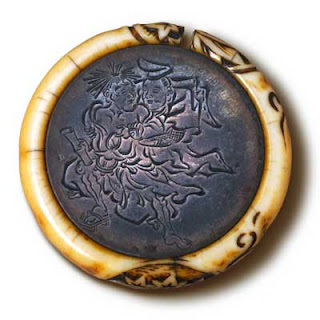One of the most fascinating recent books that I have read is, The Hare with Amber Eyes: A Hidden Inheritance by Edmund DeWaal. It is the story of an extraordinary collection of Japanese netsuke that the author had inherited from his family. Fascinated by the history of the collection, DeWaal decided to trace the origins of the netsuke which began with his great uncle, Charles Ephrussi. Charles, was a passionate collector of art in Paris during the later part of the 19th century and became a great enthusiast of “Japonisme” (A French term for the craze of all things Japanese that took place in Paris at the time).
Besides collecting Japanese wood block prints, porcelain and lacquerwork, Charles began assembling his collection of netsuke.
Japanese netsuke (pronounced net-skeh) are miniature sculptures that served a decorative and functional purpose. They were used on mens kosode and kimono robes. Because the kimono’s had no pockets they needed something for storing personal belongings such as tobacco, currency and other items. The solution was to use a pillow form pouch called “sagemono”or “Inro”, which were made from a variety of materials such as wood, lacquer and shagreen or even finely woven baskets.
The sagemono were hung by cords from the kimonos sashes called “obi”. The cords included beads called “ojime” which held the lids shut on the sagemono and the fastener that secured the “ojime” to the “obi” was the netsuke.
Netsuke became art in itself and were made in a variety of forms and materials.



















